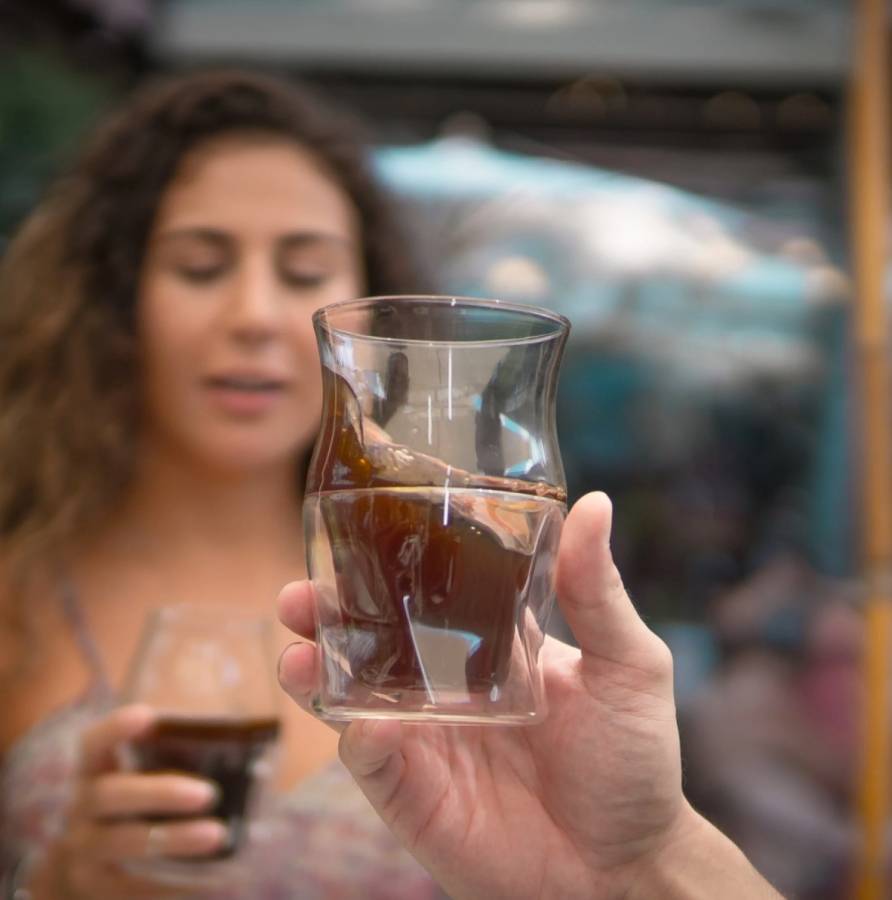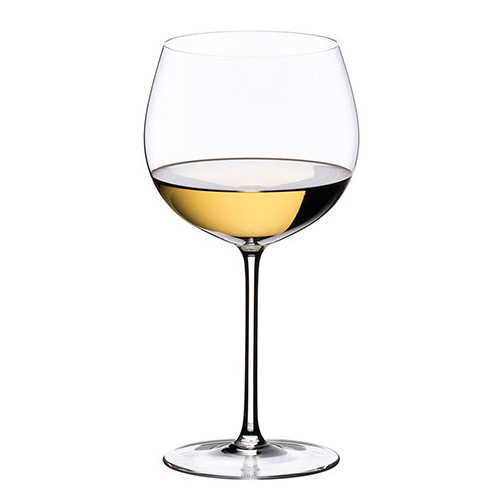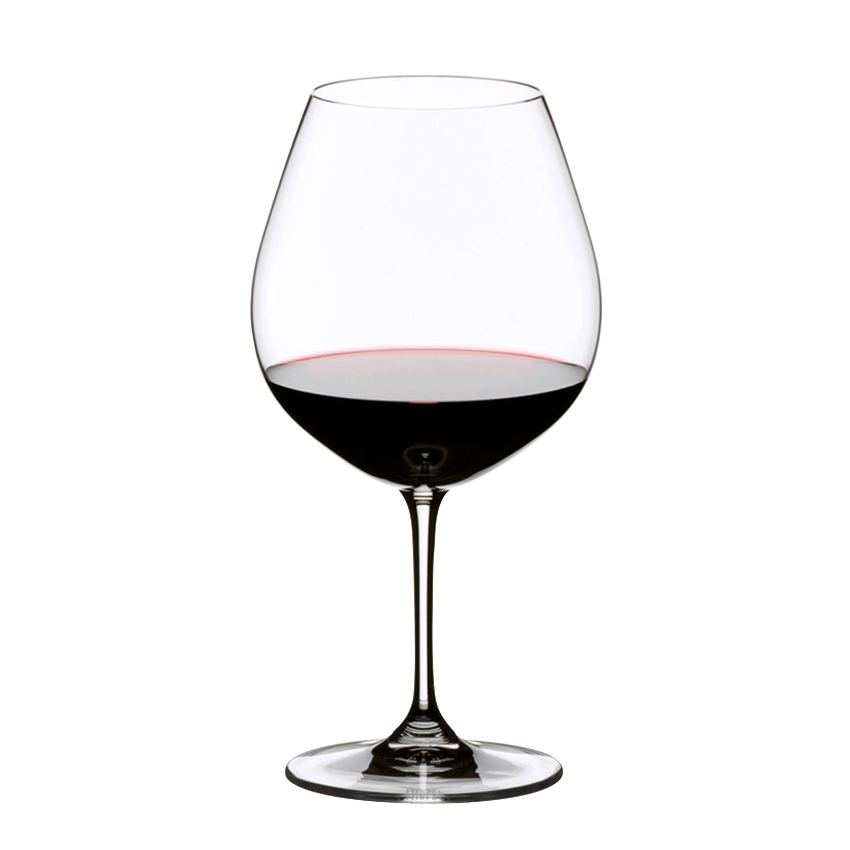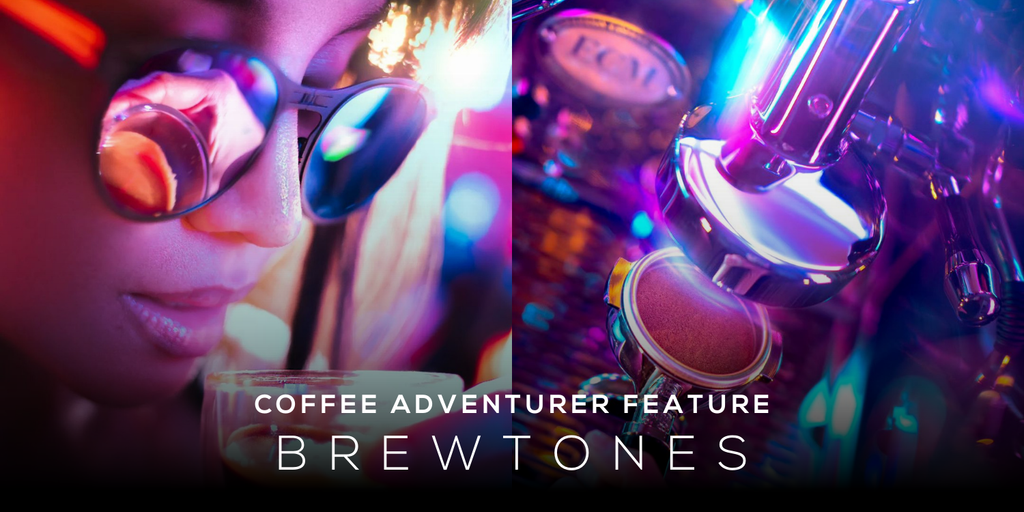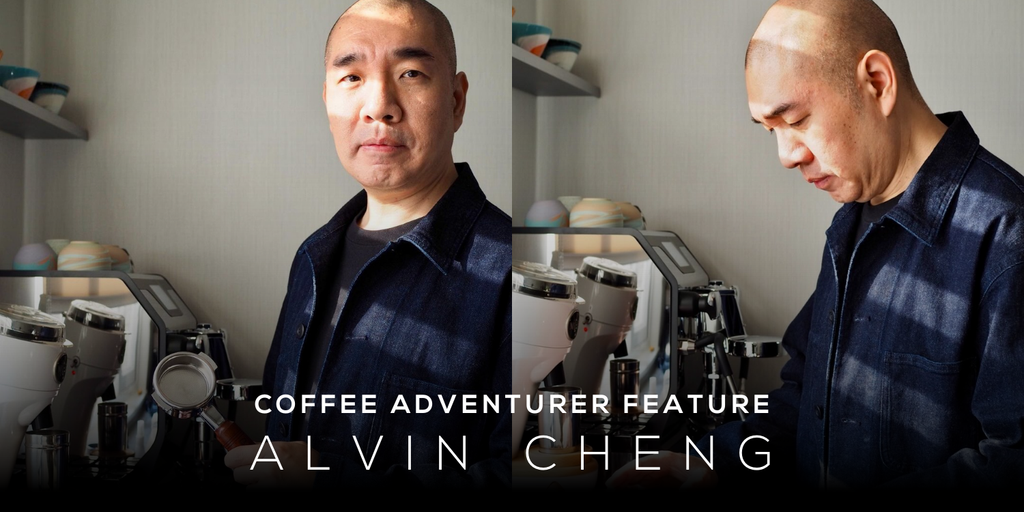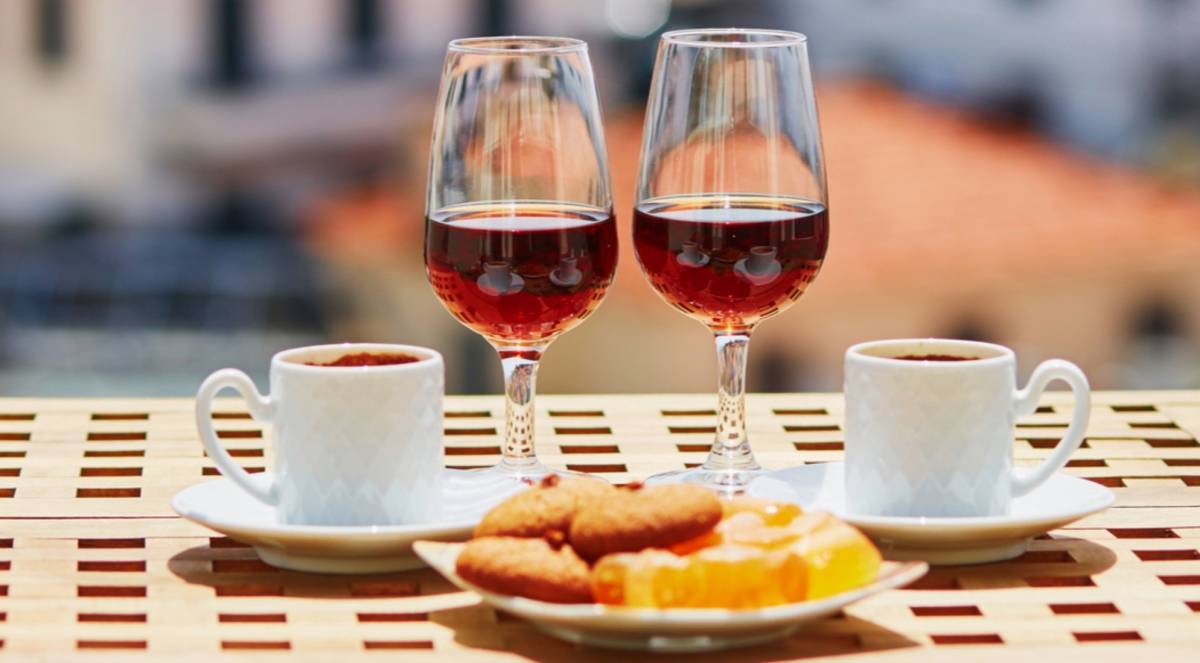
Image from Michelin Guide
Comparing coffee to wine is akin to comparing day and night — incidentally, the former is usually consumed during the day and the latter at night. There may be stark differences between the two and the cultures that surround them, but from the lens of sensory experience, there are actually more similarities than meets the eye.

Coffee and wine are sensory treasure troves for beginners and experts alike, with a near endless spectrum of beautiful flavors, aromas, and textures (also known as “mouthfeel” or “body”) to discover. There are even detailed flavor wheels for coffee and wine that identify the distinct flavor notes you can explore. This is thanks to the vast diversity of wine grape and coffee cherry varieties, grown in various corners of the world. These varieties have their own origins and terroirs, which are carefully cultivated because of how they affect the end aromas, flavors, and even textures in your cup. Even the processing methods that are used to refine and extract the flavors from the raw fruits are seeing more crossovers: from wine borrowing the ‘natural processing’ method in what’s called the ‘Winey Process’, to coffee borrowing the barrel aging process to introduce wood and even bourbon. From this perspective, you can see how coffee and wine are both rich sensory experiences.
Coffee may be the more consumed drink in the world, but the clear advantage for wine is how mature the industry and culture has become thanks to its longer history of cultivation, knowledge, and sensory appreciation. The world of specialty coffee has only been around since the ‘70s, and despite the blistering pace of innovation and evolution, there is still so much that has yet to be fully understood by the regular coffee drinker. Despite the headstart that the wine industry has, the benefit for coffee drinkers is how much we can learn and apply to elevate the way we experience and appreciate coffee.

Wine really is the gold standard when it comes to enjoying wine and its full spectrum of flavors. So let’s take a closer look at the 3 simple hacks every coffee drinker can learn from wine appreciation to level up our coffee sensory experience.
1. Choose a drinking vessel that allows you to SWIRL to amplify aromas

Image from winefolly.com
To put it simply, the glass you choose to drink your coffee from matters. Ask any wine sommelier what the most essential tool is for sensory perception and they’ll tell you it’s the wine glass. It’s the key instrument that allows them to channel all those rich aromas and flavors to their nose and palate. The vessel plays a crucial role in the sensory experience.
Before diving deeper into how the wine glass serves as an important sensory tool, let’s take a step back and look at why the aromatic experience is the most important aspect of wine and coffee. When you consider flavor science, flavor is actually our combined perception of taste and aroma, but what most people don’t know is that 90% of what we perceive as flavor comes from our sense of smell. Wine’s rich bouquet of aromatic compounds are responsible for producing the vast majority of flavors in wine. In order to taste flavors in wine you really need ‘headspace’ above the wine to collect those delicate aromatic compounds. There’s a good reason you don’t drink fine wine from a plastic cup or a ceramic mug––because the shape isn’t conducive for channeling aromas.
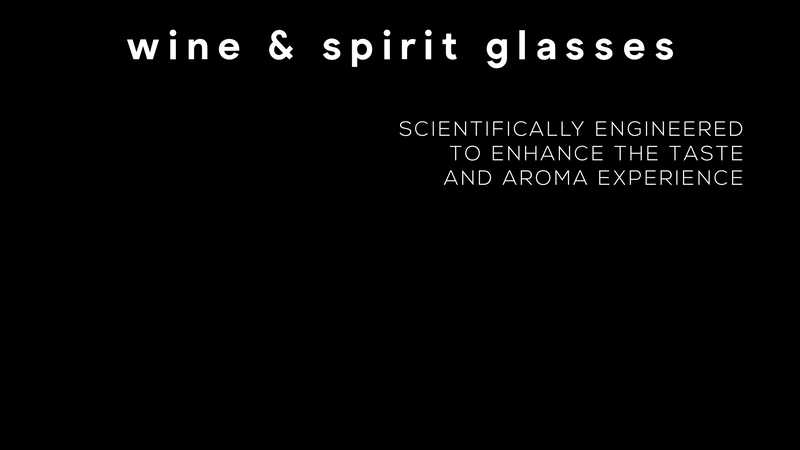
In the 1950s, The Riedel Wine Glass Company revolutionized how wine is appreciated by creating the modern ‘egg shaped’ wine glass featuring a wide bowl and tapering rim. Larger diameter bowls allow for increased diffusion of aromatic molecules into the air, while smaller rim sizes prevent aromas from escaping olfactory detection. This is known as the ‘bowl-to-rim’ ratio, where a higher ratio maximizes aromatic diffusion, while focusing aromas as much as possible into a central location for sampling, so none escapes the nose. A glass with a bowl-to-rim ratio of 1.4:1 will resemble the classic egg-shaped wine glass, whereas a bowl-to-rim ratio of 1:1 will resemble a straight cylindrical coffee mug–more evidence why wine aficionados don’t use coffee mugs to appreciate wine.
In addition to capturing aromas, the unique shape profile of wine glasses also allows for swirling, which is another important tool in the sommelier’s tasting arsenal. Swirling your wine before sipping has long been ingrained in wine drinking culture, but it’s actually a necessary step to unlock the dormant aromas and flavors. Swirling helps to lift the aroma by volatilizing the heavier more desirable aromatic molecules (such as the fruity & mineral aromas), while helping to oxidize the alcohol content, ridding the wine of the rather unpleasant alcohol scents. The tall design of wine glass captures those diffused aromas which stay locked inside the glass allowing you to inhale those beautiful aromas. As Claus Riedel, the visionary behind the original modern wine glassware, said it, “People who drink wine through Riedel glasses drink better wine.” Perhaps, this can be very well applied to how we experience coffee as well.
So what can we learn from the rich history of wine glass craftsmanship? Given that specialty coffee is “special” for a reason, due in part because of the time, effort, and processing to ensure that the beans harvested are of the highest quality, it would be a waste to not consider the coffee cup as an important tool to unlock its full spectrum of flavor notes. So here’s a simple tip to unlock those aromas hiding in your favorite brews: look for a vessel with a high bowl-to-rim ratio that allows for safe swirling and has the necessary ‘headspace’ above the coffee to capture those delicate coffee aromas and deliver them to your nose. If you have a few red and white wine glasses at home, you can even experiment with your next brew to experience the difference side-by-side next to your normal ceramic coffee mug.
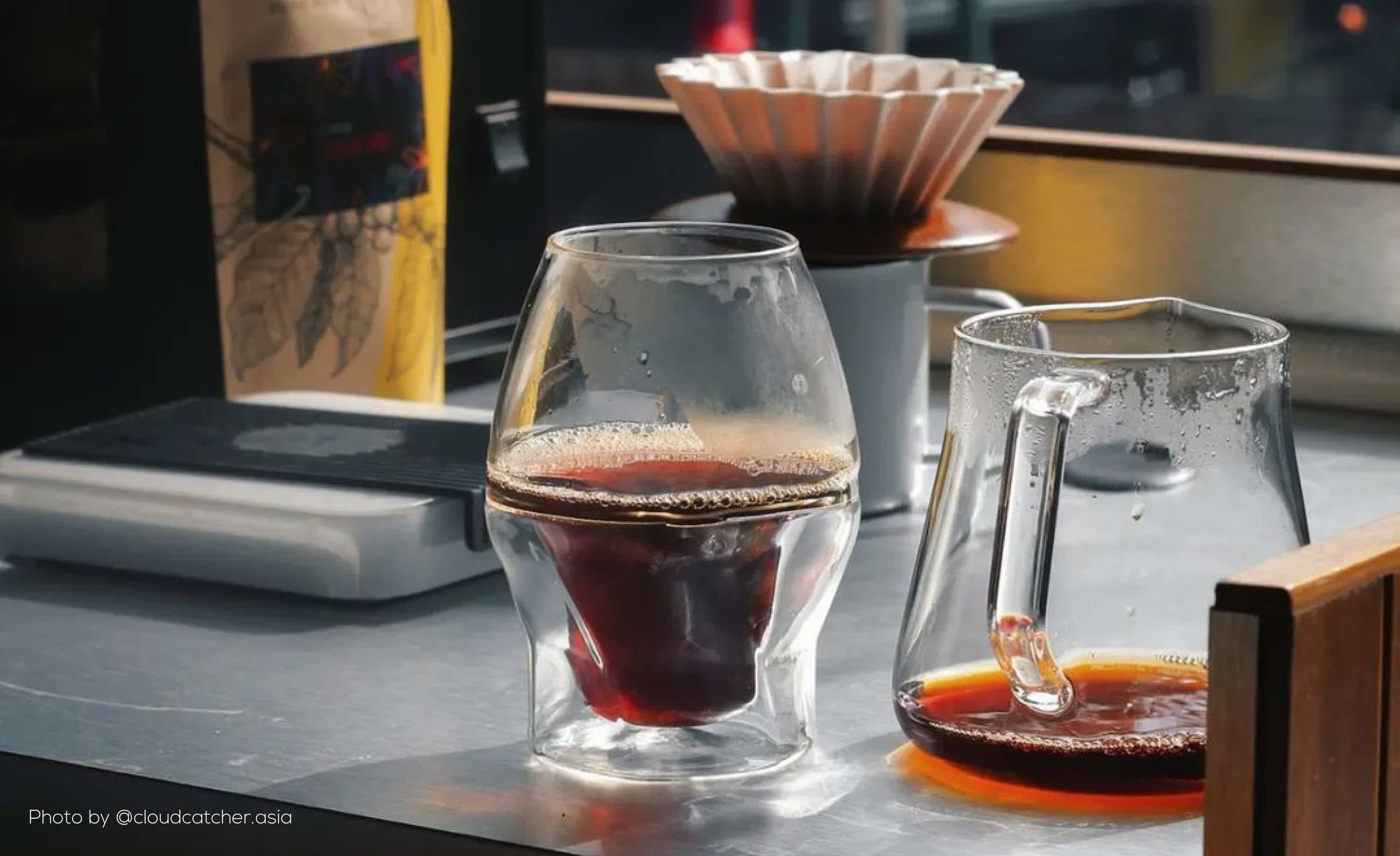
Say hello to your new coffee e-zine for the most interesting news, tips, and trends in the world of coffee.
2. Choose a drinking vessel that enhances the liquid flow onto your palate for improved taste perception
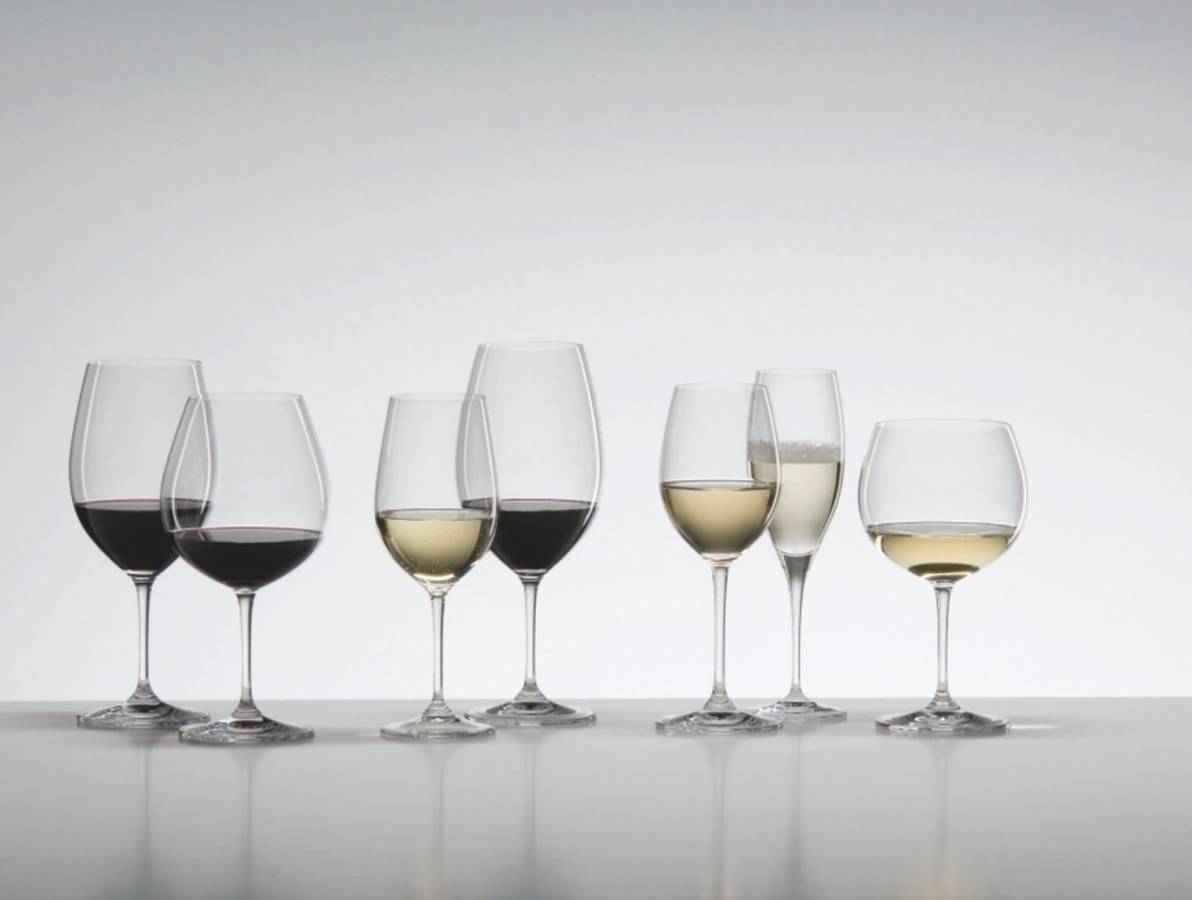
Image from Riedel
You might be surprised to learn that in addition to amplifying aroma, selecting the right drinking vessel can also enhance taste. Later in the 1970s, Riedel took their design one step further by developing a collection of unique vessel shapes to enhance flavor profiles of specific wine varietals. These glasses feature an array of unique shape profiles, from the balloon shaped Montrachet glass for full bodied white wines to the tulip shaped Pinot Noir Glass. What makes these glasses unique are the different variations in bowl size, shape profile, and rim diameter — these are the 3 most crucial aspects of a wine glass architecture. While the size of the bowl controls the surface area of wine exposed to air, the shape determines how the liquid flows to the opening, and the rim's diameter influences how fast the wine flows and how it lands on the palate. By developing the glasses closely with sommeliers, Riedel fine tuned each glass shape to speak to the unique flavor profiles of different wines. For example, they discovered that two wine glasses with similarly sized bowls, but with different rim diameters, created distinct flavor experiences from the same wine! It turns out that even small changes in rim diameter and shape (for example: flared rim vs tulip tim) creates different liquid ‘flow patterns’ that direct the wine onto different areas of your tongue and palate, affecting overall mouthfeel, taste perception, and aftertaste.
To demonstrate this phenomenon, imagine drinking from the Riedel Montrachet wine glass, which is designed for new world chardonnays. It features a wide bowl and large rim opening. When you tip the glass forward to your mouth, due to the shape of the bowl and rim diameter, the flow pattern becomes very round causing the wine to bypass the tip of the tongue and spread to the side walls of your palate (this highlights the minerality, while muting the acidity of the chardonnay, enhancing the smoothness of the wine). In contrast, compare this to Riedel Pinot Noir Glass which features a unique tulip shape with a smaller rim and subtle flare. As you tip the glass toward your mouth, you’ll naturally purse your lips on the smaller rim opening; the flow pattern becomes focused and pointy, directing the wine towards the tip of your tongue (this brings forward the sweetness of the Pinot Noir, balancing the typical acidity of the wine, and prolongs the lingering aftertaste).
Another important factor to consider is the thickness of the rim. Sommeliers agree that the thinner the rim, the better the taste experience of the wine. Commercially available tempered wine glasses often have a rim that is reinforced by a bead of thicker glass right at the rim. This is designed to prevent chipping. Unfortunately, as you take a sip from these glasses, this also has the effect of directing the wine straight to the back of your mouth, skipping most of your palate entirely. The invention of lead crystal, and later titanium crystal, allowed for the creation of more durable, featherlight, ultra thin wine glasses. These thinner rims maximize wine intake, allowing the wine to immediately flow to all corners of your mouth revealing the harmony of flavors. This is why companies like Riedel, Spiegelau, Schott-Zwiesel, Rona, and Stolzle have glass collections that boast ultra thin rims less than 1mm thick, with plenty of wine enthusiasts lining up to pay top dollar for them.

Image from winefolly.com
So how can you apply this to your coffee drinking experience to enhance the different tasting notes of your favorite brews? Taking a lesson from Riedel, experiment with vessels that have different shape profiles and rim diameters –– these design factors are what control the flow of coffee onto your tongue and palate. Look beyond your normal ceramic coffee mug (which is usually just a normal cylindrical shape with a thick rim), taste the same coffee from different shaped glasses to experience first hand how the shape affects the coffee’s flow pattern, and thus the resulting taste experience. The principles from wine sensory and glass design may not apply directly to coffee, but we’ve found that wider rimmed cups that flare outwards at the rim tend to enhance body and acidity, while smaller rimmed cups with a tulip shape profile tends to balance overall flavors while complementing sweet and chocolaty flavor notes.
3. Pair the right vessel shape with your coffee for the best flavor experience
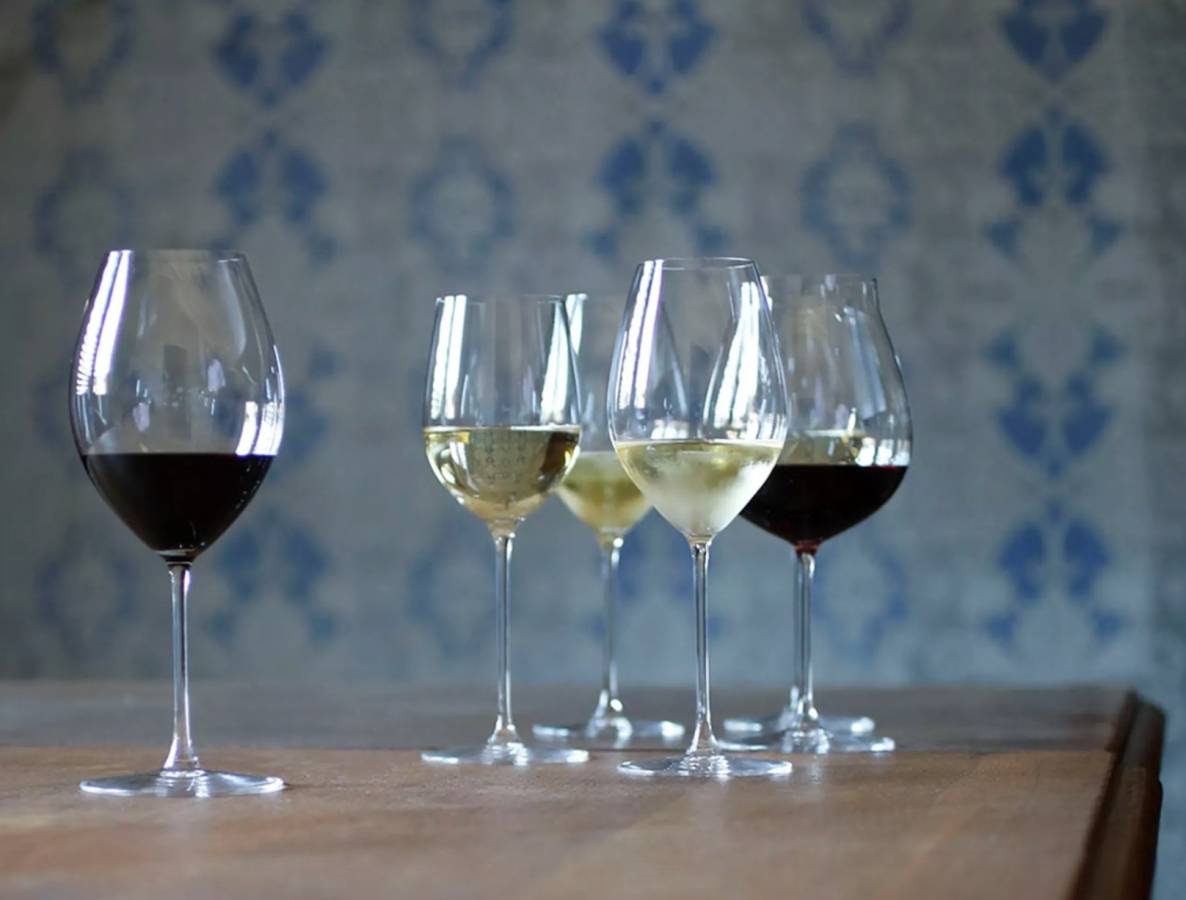
Image from winefolly.com
By now you’ve learned how the wine glass serves as an essential tool for wine appreciation, but amplifying aroma and enhancing taste is just the beginning. As we mentioned earlier, in the 1970s Riedel created their wine varietal specific glassware and pioneered the idea that each wine varietal should be paired with the right shaped glass for the best flavor experience. You wouldn’t use a screwdriver to hammer a nail into a piece of wood; likewise you wouldn’t drink red wine from a champagne glass – using the right tool for the job makes a difference. Following this philosophy, over the past few decades Riedel designed hundreds of different glass shapes to cater to dozens of wine varietals and even different beverages like beer, spirits, and cocktails. You might think this is a marketing ploy to sell more glassware, but in a Japanese study using a special camera researchers demonstrated how different glass shapes affected the density and position of vapors at the openings of different glasses.

Credit: via mitsubayashi lab/tokyo medical and dental university/inst of biomaterials and bioengineering
Let’s look at a couple common examples of wine glass pairing. White wines have more delicate floral aromas and higher acidity. This flavor profile pairs best with a glass that has a smaller bowl, which preserves the floral aromas and delivers more aromas due to the proximity of wine to the nose. White wine is also best served chilled to keep the more delicate, volatile aromas from diffusing too quickly, which also benefits from a smaller bowl because the smaller volume and surface area helps to maintain the wine’s temperature. Red wines, on the other hand, have tannins (tannins come from the skins and seeds of the grapes and cause the drying sensation on your tongue) and a more potent aroma. This flavor profile pairs best with a glass that has a wide bowl, tall walls, and wide rim. This type of glass helps to soften the stronger scent and alcohol content of red wine by dampening the effect of swirling, while the wide rim helps to mitigate the tannins and spicy flavors, delivering a smoother tasting wine. There are varying shapes for red wine glasses but the standard has a shorter stem, bigger bowl surface, and a slightly smaller rim opening that’s still much wider than that of a white wine glass.
You may be surprised to know that these design principles aren’t limited to wine–other alcoholic beverages like beer also benefit from being paired with the right glass. For example, wheat and lager beers are best consumed in tall, slim glasses. These glasses are better at retaining carbonic acid (carbonic acid is the dissolved carbon dioxide that creates the bubbles in beer), which is an advantage for wheat and lager because of their lighter flavor. For fuller-bodied and heavier beer like ales and stouts, big pint glasses are the best way to go since retaining carbonic acid isn’t as important given the richness in flavor of these beers.
According to Riedel, wine glasses should be seen as ‘messengers’ that highlight specific flavors of the wine you’re drinking. You can follow this same principle when experimenting to pair your favorite coffees with a cup shape that brings out the best flavors of your brew. Figuring out exactly which cup shape pairs best with each coffee sounds like a daunting task, but that’s exactly what we were able to figure out at ICOSA Brewhouse with the help of over 90+ coffee experts from 30+ countries around the world. That brings us to the third and final hack to level up your coffee sensory experience: pick up a set of our AVENSI coffee sensory glassware to get the most from your coffee experience.
Our team was inspired by Riedel to design the award winning AVENSI Coffee Enhancing Glassware collection–a set of 3 uniquely shaped glasses scientifically engineered to capture coffee’s complex aromas, tastes, and flavors, and deliver them to your senses better than any existing coffee cup. The patent pending design combines decades of science and engineering from wine and spirit glasses to create 3 special glasses named VIDA, SENTI, and ALTO.

Each of the unique shapes of the AVENSI glassware line feature different bowl sizes, shape profiles, and rim architectures to direct the flow and spread of coffee onto specific areas of your tongue and palate, creating a unique tasting experience that enhances your coffee’s flavor notes, immersing your palate with rich flavors in every sip.
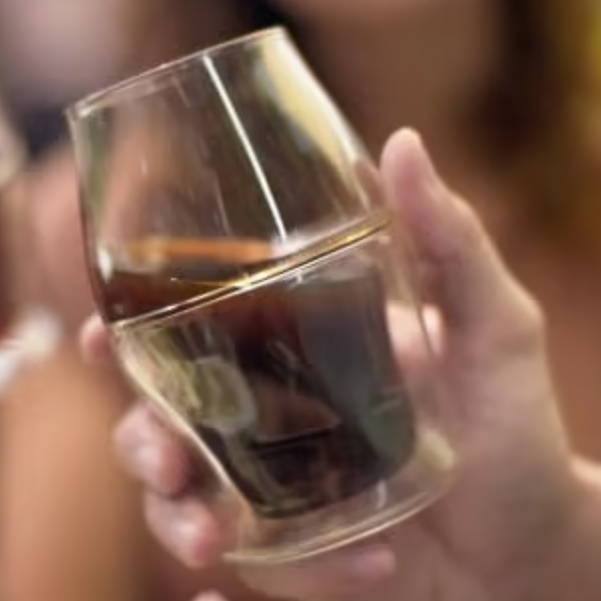
The VIDA glass features a tulip-shaped profile, which amplifies aromas, while directing coffee to the front of your tongue. It pairs perfectly with chocolaty, sweet, well rounded, light to dark roasts.
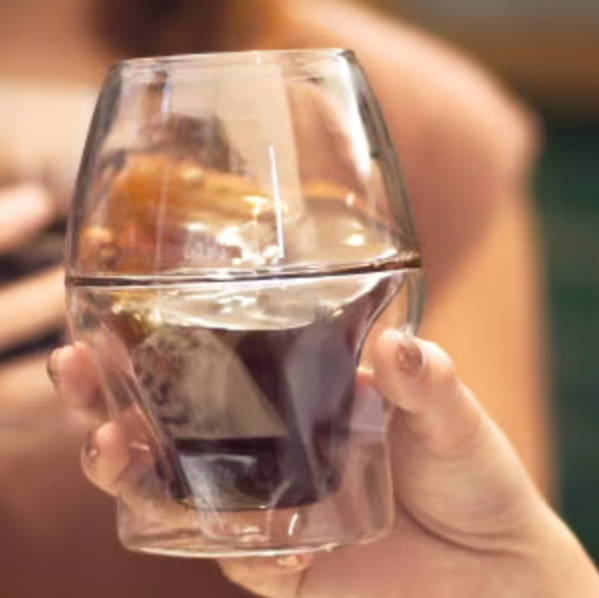
The SENTI glass is designed to maximize aroma and intensify the body, thanks to its extra-wide bowl diameter which maximizes surface area, while directing coffee to the centre of your tongue. It pairs wonderfully with medium and darker roasts with earthy, nutty, and caramel flavor notes.
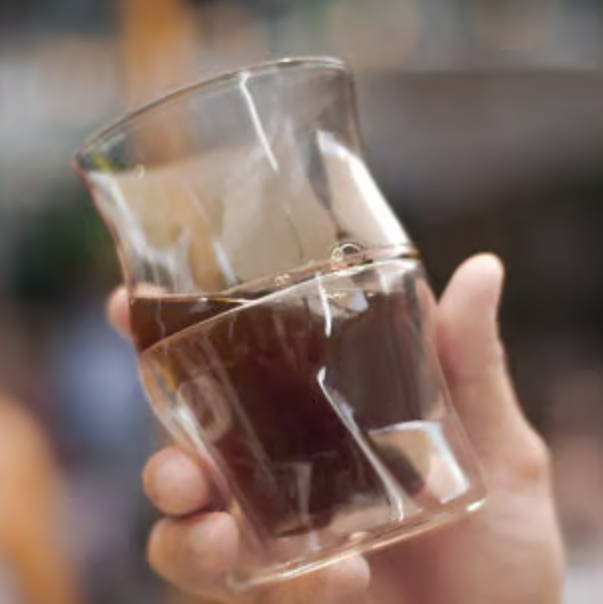
Lastly, the ALTO glass has the most unique shape. The hourglass profile and wide flared rim spreads a thin flow of coffee across the top and sides of your tongue enhancing body and juicy acidity. It’s fun for experimenting with bright, fruity, citrusy, lighter roast coffees.
As you’ve learned, coffee and wine have many more similarities than differences when it comes to the sensory experience. Despite wine culture being decades ahead in terms of sensory research and tools, we can easily apply these three lessons from wine appreciation to enhance the way we drink and appreciate coffee.
If you want to get a head start in experimenting with different vessels, we highly recommend getting a set of AVENSI glasses because they were specifically designed for coffee. Since the launch of AVENSI in 2020, more and more coffee professionals and enthusiasts from around the world are raving about how AVENSI Coffee Sensory Glassware is elevating the way we appreciate specialty coffee, much like how Riedel pioneered the movement for wine appreciation in the 1950s. With plenty of support from top coffee experts, champion brewers, and sensory experts, and even winning the coffee industry’s top award in 2021 for SCA’s Best New Product, ICOSA Brewhouse has made it easier than ever to enjoy the beautiful spectrum of flavors hiding in your favorite brews.
